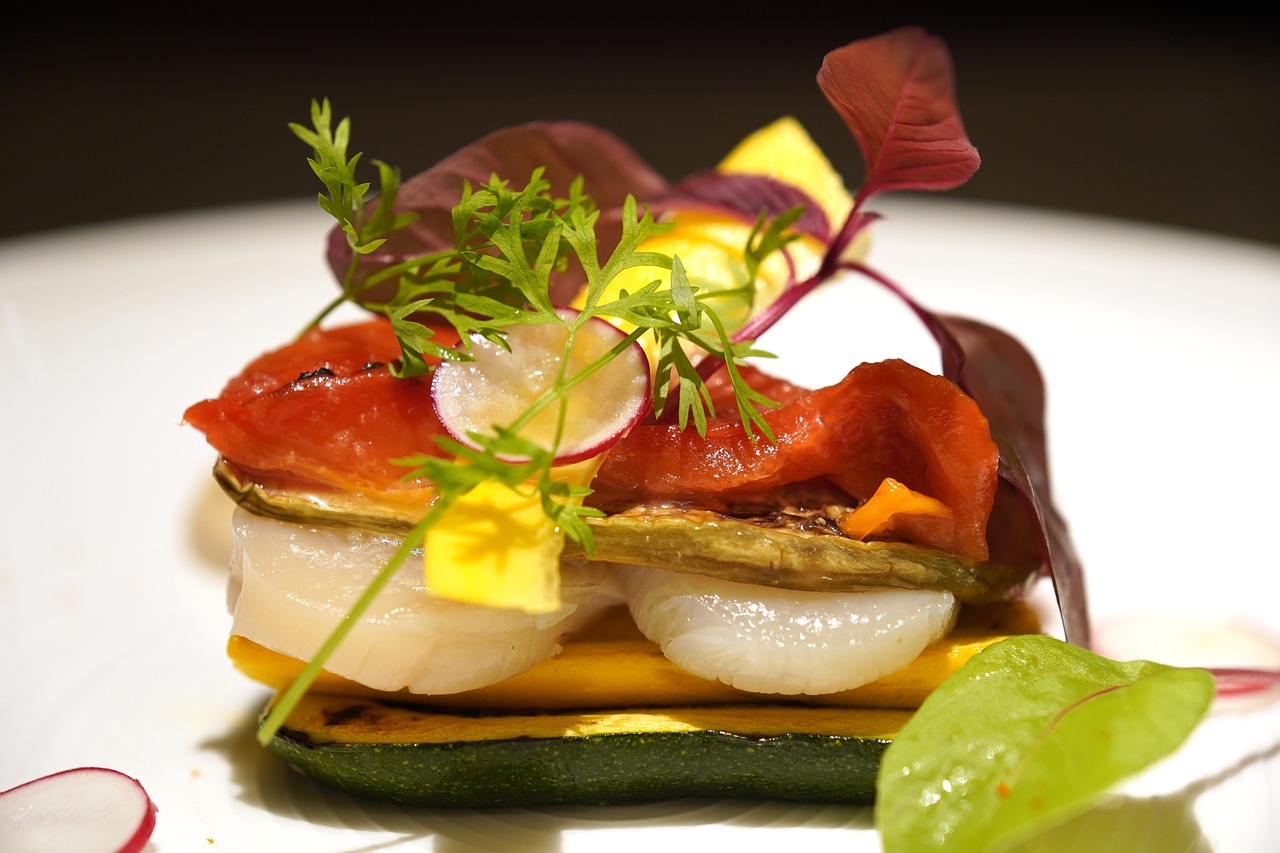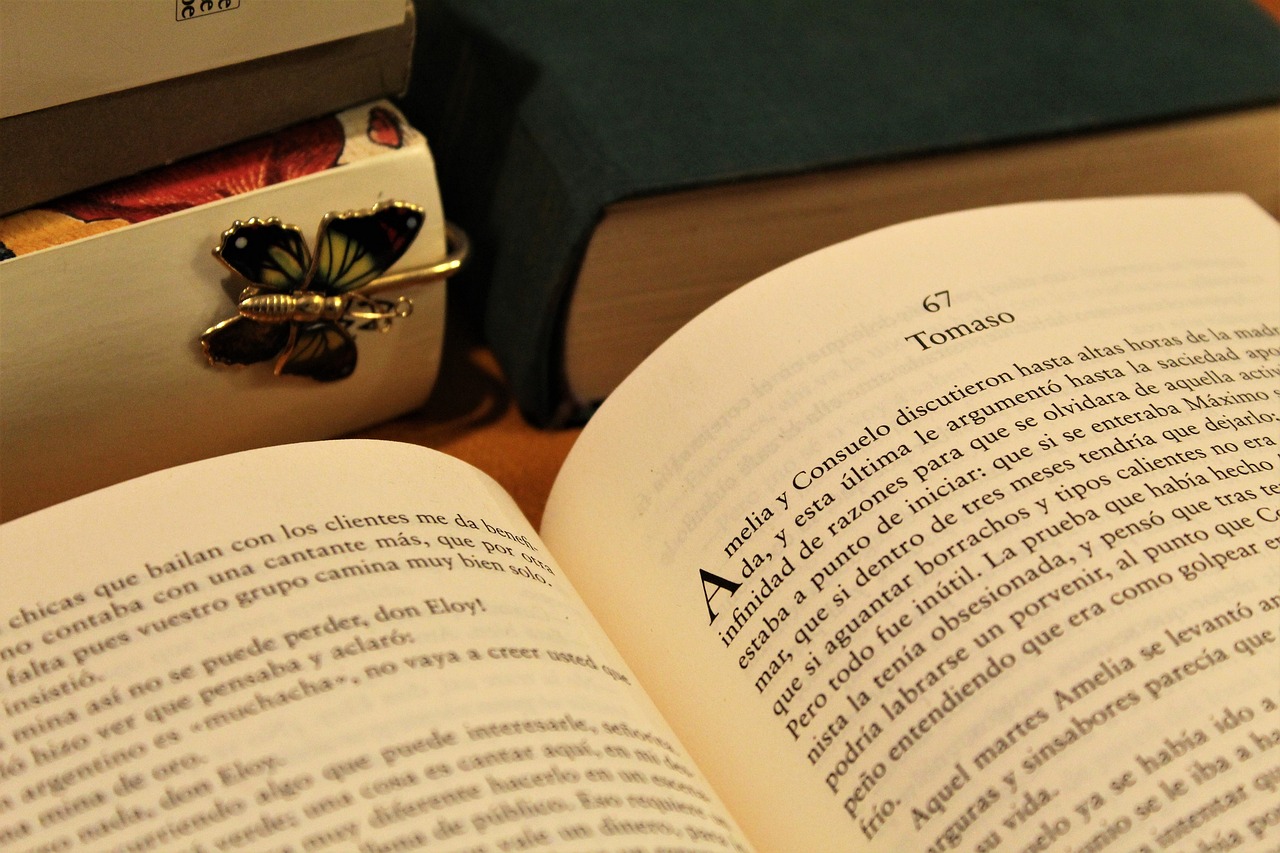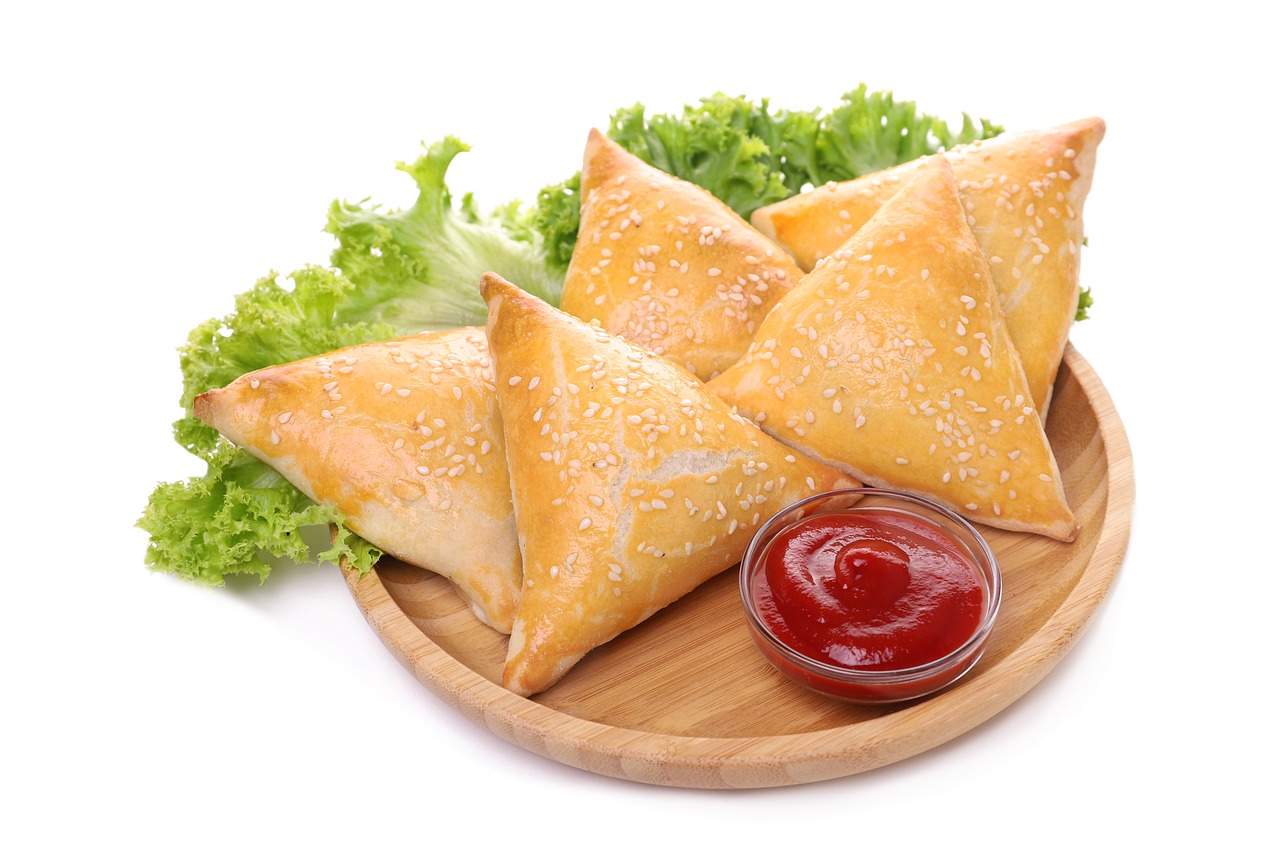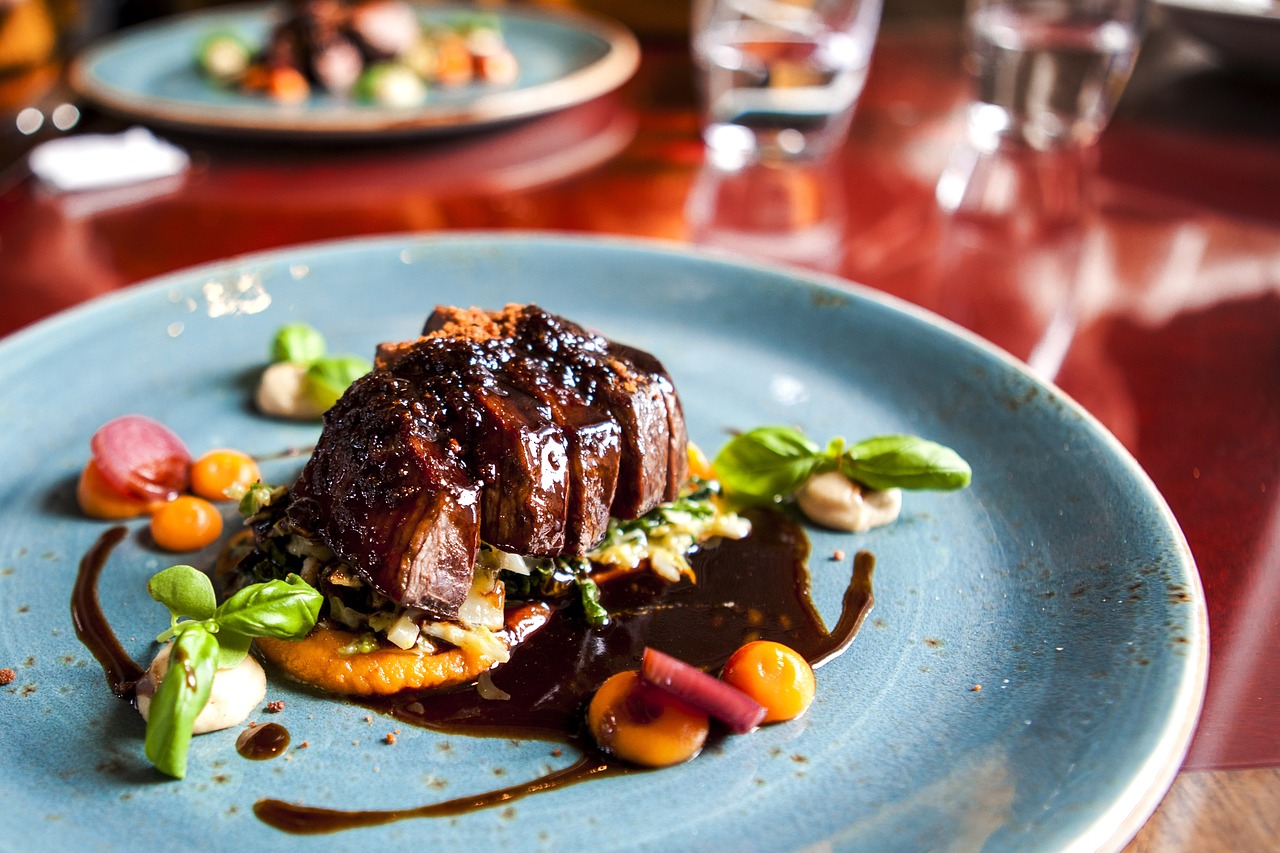How to Craft Traditional Spanish Tortilla
Are you ready to embark on a culinary journey to Spain without leaving your kitchen? Let's dive into the art of crafting a traditional Spanish tortilla, a dish that encapsulates the essence of Spanish cuisine. This iconic dish, known as tortilla de patatas, combines simple yet flavorful ingredients to create a dish that is loved by many.
Picture this: golden-brown potatoes, caramelized onions, and fluffy eggs coming together in perfect harmony, creating a dish that is both comforting and satisfying. The secret lies in the technique and attention to detail, so let's unravel the steps to create this Spanish delicacy that will impress your taste buds and guests alike.
As you gather your potatoes, eggs, onions, and olive oil, you are on the path to creating a dish that has stood the test of time in Spanish culinary history. The humble ingredients transform into a masterpiece that is greater than the sum of its parts, showcasing the beauty of simplicity and tradition.
Imagine the sizzle of the olive oil as it gently fries the potatoes to a crisp perfection, the aroma filling your kitchen and teasing your senses. The rhythmic sound of the eggs being beaten, ready to bind everything together in a harmonious union of flavors and textures.
With each flip of the spatula, you are one step closer to creating a tortilla that is not just a dish but a work of art. The anticipation builds as you wait for the tortilla to cook to a golden hue, signaling that it is ready to be served and enjoyed.

History of Spanish Tortilla
The history of Spanish tortilla, or tortilla de patatas, dates back to the 19th century and is rooted in humble beginnings. Originally a simple dish made of potatoes and eggs, the Spanish tortilla has evolved over time to become a beloved staple in Spanish cuisine. Legend has it that the tortilla was created out of necessity by a Spanish general who needed a quick and filling meal for his troops during wartime. Since then, it has become a symbol of Spanish culinary tradition and is enjoyed by people all over the world.
Throughout history, the Spanish tortilla has undergone various adaptations and regional variations, reflecting the diverse culinary landscape of Spain. Different regions have put their own twist on the classic dish, adding ingredients such as chorizo, peppers, or even seafood to create unique flavor profiles. Despite these variations, the essence of the Spanish tortilla remains the same - a comforting and hearty dish that brings people together around the dining table.
Today, the Spanish tortilla continues to hold a special place in the hearts of Spaniards and food enthusiasts alike. Its rich history and cultural significance make it more than just a dish; it is a symbol of Spanish identity and tradition. Whether enjoyed as a tapa in a bustling bar in Madrid or as a main course at a family dinner, the Spanish tortilla is a timeless classic that never fails to delight the taste buds.

Ingredients and Tools Needed
When it comes to crafting the traditional Spanish tortilla, having the right ingredients and tools is essential to ensure the dish turns out perfect. The key components for making a delicious tortilla de patatas include potatoes, eggs, onions, and olive oil. These simple yet flavorful ingredients come together to create a dish that is both hearty and satisfying.
In addition to the ingredients, having the right tools on hand will make the cooking process much smoother. A non-stick skillet or frying pan is crucial for cooking the tortilla evenly and preventing it from sticking. A sharp knife for slicing the potatoes and onions, a spatula for flipping the tortilla, and a mixing bowl for beating the eggs are also essential tools for crafting this traditional Spanish dish.
When selecting the potatoes for your tortilla, it's important to choose a variety that is suitable for frying. Look for waxy potatoes such as Yukon Gold or red potatoes, as they hold their shape well during cooking and provide a creamy texture to the tortilla. Avoid using starchy potatoes like Russets, as they tend to fall apart and become mushy.
Preparing the ingredients for the tortilla is a crucial step in ensuring the dish turns out delicious. Start by peeling and thinly slicing the potatoes and onions. Heat the olive oil in the skillet and fry the potatoes and onions until they are tender and slightly golden. Beat the eggs in a bowl and season with salt and pepper before combining them with the cooked potatoes and onions.
Once all the ingredients are mixed together, it's time to cook the tortilla. Pour the mixture back into the skillet and cook it over low heat until the edges are set. To ensure the tortilla cooks evenly, you'll need to flip it halfway through the cooking process. This can be done by placing a plate over the skillet and flipping the tortilla onto the plate before sliding it back into the skillet to cook the other side.
When it comes to serving and enjoying the traditional Spanish tortilla, the possibilities are endless. Whether served as a main dish alongside a fresh salad or sliced into bite-sized pieces as a tapa, this versatile dish is sure to impress. Pair it with a glass of Spanish wine or a refreshing sangria for the perfect culinary experience.
Lastly, knowing how to store and reheat leftover tortilla is essential for prolonging its freshness. To store any uneaten portions, wrap the tortilla in plastic wrap or aluminum foil and refrigerate it. When ready to enjoy again, simply reheat the tortilla in a skillet over low heat until warmed through, ensuring it retains its delicious flavor and texture.

Choosing the Right Potatoes
When it comes to crafting a traditional Spanish tortilla, selecting the right potatoes is crucial to achieving the perfect texture and flavor. The most commonly used potatoes for making tortillas are starchy varieties like Russet or Yukon Gold potatoes. These types of potatoes have a high starch content, which helps bind the ingredients together and gives the tortilla its characteristic creamy texture.
Starchy potatoes are ideal for Spanish tortillas because they hold their shape well when cooked and release just enough starch to create a cohesive dish. Waxy potatoes, on the other hand, such as New Potatoes or Red Bliss, are not recommended for making tortillas as they tend to hold too much moisture and can result in a soggy or mushy texture.
When selecting potatoes for your tortilla, look for firm, smooth-skinned potatoes that are free of blemishes or sprouts. It's also important to choose potatoes that are similar in size to ensure even cooking. Additionally, consider the size of the potato pieces you will be slicing – larger pieces will take longer to cook, while smaller pieces may cook too quickly and become mushy.

Preparing the Ingredients
When it comes to preparing the ingredients for a traditional Spanish tortilla, attention to detail is key to achieving the perfect balance of flavors and textures. The first step is selecting the right potatoes for the dish. It is essential to choose starchy potatoes like Yukon Gold or Russet potatoes, as they hold their shape well when cooked and provide a creamy texture to the tortilla.
Next, you will need to peel the potatoes and slice them thinly into rounds or cubes, depending on your preference. Similarly, the onions should be thinly sliced to ensure even cooking and distribution of flavor throughout the tortilla. It is important to cook the potatoes and onions until they are soft and slightly caramelized, as this will enhance the overall taste of the dish.
Once the potatoes and onions are cooked to perfection, it's time to prepare the eggs. Beat the eggs in a separate bowl and season them with salt and pepper to taste. The beaten eggs will bind the ingredients together and create a creamy and fluffy texture in the finished tortilla.
Before combining all the ingredients, make sure to heat the olive oil in a non-stick skillet over medium heat. The olive oil adds richness and flavor to the tortilla while preventing it from sticking to the pan. Gently mix the cooked potatoes and onions with the beaten eggs, ensuring that every piece is coated evenly.
Now, carefully pour the mixture into the skillet and spread it out evenly with a spatula. Cook the tortilla on low heat until the edges start to set, then use a plate or a second pan to flip it and cook the other side until golden brown. This flipping process is crucial to ensure that the tortilla is cooked through and has a uniform color on both sides.
Once the tortilla is cooked to perfection, remove it from the heat and let it cool slightly before serving. Whether enjoyed warm or at room temperature, the traditional Spanish tortilla is a versatile dish that can be served as a main course, appetizer, or snack, making it a favorite among food enthusiasts worldwide.

Cooking the Tortilla
When it comes to cooking the traditional Spanish tortilla, it's all about mastering the art of combining simple ingredients to create a flavorful and satisfying dish. The process starts with frying the potatoes and onions to perfection before mixing them with beaten eggs. This step is crucial in ensuring that the tortilla turns out golden-brown and delicious.
To cook the tortilla evenly on both sides, you need to perfect the flipping technique. Whether you prefer using a plate or a second pan, the key is to flip the tortilla with confidence to avoid any mishaps. This step requires a bit of skill and practice, but once you get the hang of it, you'll be able to impress your guests with a perfectly cooked tortilla.
Once the tortilla is cooked to perfection, it's time to serve and enjoy this classic Spanish dish. Whether you choose to enjoy it as a main course, a tapa, or a picnic snack, the tortilla pairs well with a variety of accompaniments and beverages. From a simple side salad to a glass of Spanish wine, there are endless ways to enhance the flavors of the tortilla.

Flipping Techniques
When it comes to crafting a traditional Spanish tortilla, mastering the art of flipping is crucial to ensure a perfectly cooked dish. The flipping technique is a critical step in the cooking process that can make or break the final result. To achieve a flawless flip, you need to be patient and confident in your movements.
One common method for flipping the tortilla is using a plate. Place a plate that is larger than the pan over the top of the pan, hold it firmly, and quickly invert the pan to transfer the tortilla onto the plate. Then, slide the tortilla back into the pan to cook the other side. This technique requires a steady hand and a swift motion to prevent any spillage.
Another popular flipping technique involves using a second pan. Place another pan of the same size over the pan with the tortilla, hold both pans firmly together, and swiftly flip them over to transfer the tortilla into the second pan. This method allows for a quick and seamless flip, ensuring even cooking on both sides of the tortilla.
Whichever flipping technique you choose, practice and patience are key to mastering this skill. With a bit of finesse and confidence, you can flip your Spanish tortilla with ease and impress your guests with a perfectly cooked and golden-brown dish.

Serving and Enjoying
When it comes to serving and enjoying the traditional Spanish tortilla, the possibilities are as varied as they are delightful. This versatile dish can be the star of the show as a main course, a tasty tapa to share with friends, or a convenient picnic snack. The rich flavors of the potatoes, eggs, and onions cooked in olive oil make it a crowd-pleaser for any occasion.
To elevate your tortilla experience, consider serving it alongside a fresh green salad tossed in a zesty vinaigrette or a side of crusty bread to soak up the delicious juices. Pairing it with a glass of Spanish red wine or a refreshing sangria can further enhance the dining experience, transporting you to the sun-soaked streets of Spain with every bite.
If you're hosting a gathering, you can impress your guests by presenting the tortilla on a decorative platter garnished with a sprinkle of fresh herbs or a dollop of creamy aioli. The visual appeal of a well-prepared tortilla adds to the overall enjoyment of the meal, making it a feast for both the eyes and the taste buds.
For a casual meal, slice the tortilla into wedges and serve it at room temperature, allowing the flavors to fully develop. Whether enjoyed hot or cold, the Spanish tortilla is a versatile dish that can be savored in various settings, from a cozy dinner at home to a lively outdoor picnic.

Storage and Reheating Tips
When it comes to storing leftover Spanish tortilla, it's essential to follow a few simple tips to maintain its delicious taste and texture. To begin, allow the tortilla to cool completely before storing it. Once cooled, wrap the tortilla tightly in plastic wrap or aluminum foil to prevent it from drying out. Alternatively, you can place the tortilla in an airtight container to keep it fresh for longer periods. Avoid storing the tortilla in direct sunlight or warm environments to prevent it from spoiling quickly.
When reheating the Spanish tortilla, there are a few methods you can use to ensure it tastes just as delicious as when it was freshly made. One popular method is to reheat individual slices of the tortilla in a non-stick skillet over low to medium heat. This helps to maintain the crispy texture of the tortilla while heating it through evenly. Another option is to reheat the entire tortilla in the oven at a low temperature, covering it with foil to prevent it from drying out.
If you prefer to use a microwave for reheating, be sure to do so in short intervals to avoid overheating the tortilla. Cover the tortilla with a damp paper towel to retain moisture and prevent it from becoming rubbery. By following these storage and reheating tips, you can enjoy your traditional Spanish tortilla for days to come without compromising on its flavor and quality.
Frequently Asked Questions
- What is the traditional Spanish tortilla?
The traditional Spanish tortilla, also known as tortilla de patatas, is a classic dish made with simple ingredients like potatoes, eggs, onions, and olive oil. It is a versatile and flavorful dish that can be enjoyed as a main course, tapa, or snack.
- What are the essential ingredients needed to make a Spanish tortilla?
To make a traditional Spanish tortilla, you will need potatoes, eggs, onions, and olive oil. These basic ingredients come together to create a delicious and satisfying dish that is loved by many.
- How do I choose the right potatoes for making a Spanish tortilla?
Choosing the right type of potatoes is crucial for a successful tortilla. Look for starchy potatoes like russets or Yukon Gold, as they hold their shape well when cooked. Avoid waxy potatoes, as they may not provide the desired texture.
- What are some tips for flipping the tortilla during cooking?
Flipping the tortilla can be a tricky step, but with practice, you can master it. You can use a plate or a second pan to help flip the tortilla easily. Make sure to slide the tortilla back into the pan gently to cook the other side evenly.
- How should I store leftover Spanish tortilla?
To store leftover tortilla, wrap it tightly in plastic wrap or store it in an airtight container in the refrigerator. When reheating, you can use a microwave or a skillet to warm it up while maintaining its flavor and texture.



















